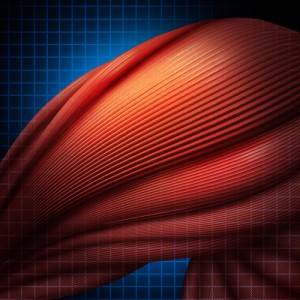Spinal Muscular Atrophy Study in Mice Reveals Deleting Atrophy Enhancing Genes Does Not Ameliorate SMA Phenotype
Written by |

 A study entitled “Deletion of atrophy enhancing genes fails to ameliorate the phenotype in a mouse model of spinal muscular atrophy,” published in the journal Neuromuscular Disorders, found that removal of genes specifically implicated in muscle atrophy does not improve Spinal Muscular Atrophy phenotype.
A study entitled “Deletion of atrophy enhancing genes fails to ameliorate the phenotype in a mouse model of spinal muscular atrophy,” published in the journal Neuromuscular Disorders, found that removal of genes specifically implicated in muscle atrophy does not improve Spinal Muscular Atrophy phenotype.
Spinal muscular atrophy (SMA) is an autosomal recessive disorder that causes loss of motor neurons and atrophy of the muscle, with patients presenting loss of strength in proximal muscles. It has been suggested that preventing muscle atrophy could ameliorate the symptoms of muscle weakness in SMA patients.
One possible therapeutic pathway for SMA is targeting signaling pathways in muscle to restructure atrophy. During atrophy, skeletal and cardiac muscles have an upregulation of particular ubiquitin ligases called MAFbx and MuRF1. Studies in mice models with induced atrophy by denervation have shown that homozygous knock-out of MAFbx or MuRF1 causes muscle sparing.
A team of researchers from Ohio State University and the Novartis Institutes for Biomedical Research examined these factors in mice models of SMA. The researchers blocked one of the main muscle atrophy pathways by removal of MAFbx or MuRF1 and tested if this in fact ameliorated muscle atrophy.
[adrotate group=”3″]
Results revealed that deletion of MAFbx had no effect on the weight and the survival, and that deletion of MrRF1 was lethal. MAFbx−/−-SMA mice exhibited an enlargement of the muscle fiber size. Additionally, the researchers found that in SMA mice MAFbx and MuRF1 transcripts were upregulated.
Chitra Iyer and colleagues found that removal of muscle specific ubiquitin ligases was not associated with SMA improvement. Moreover, the team of researchers indicate that it remains unclear if restoration of SMN in the muscle alone restores SMA deficiencies. Current evidence from studies in mouse models of SMA for potential treatment targeting the muscle have shown limited efficacy. In this regard, further investigations are necessary.






